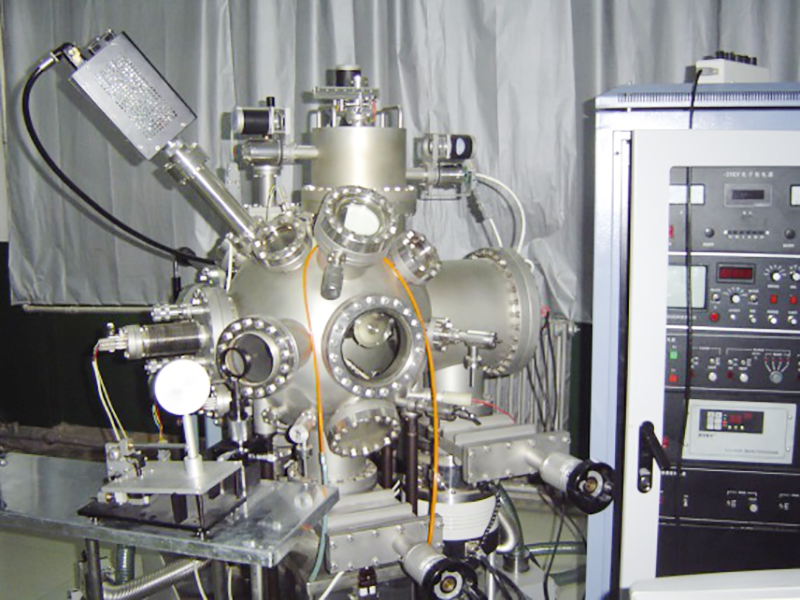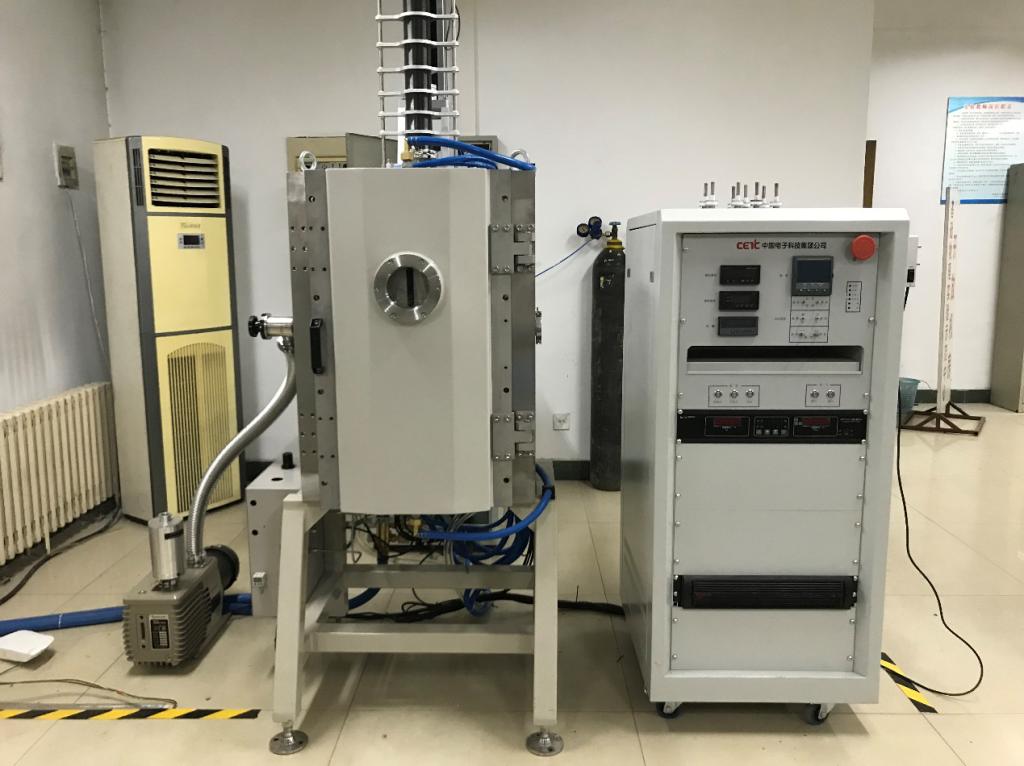School of Physics and Physical Engineering is one of the oldest departments established in Qufu Normal University. There are 5 undergraduate majors in physics, opto-electronics information science and engineering, electronic information engineering, communications engineering, and the internet of things engineering. Physics discipline is the national featured specialty in colleges and universities, provincial brand specialty in colleges and universities; Opto-electronics information science and engineering discipline is the provincial featured specialty in colleges and universities, provincial key construction specialty of elite colleges and universities; Communication engineering discipline is provincial training base for outstanding engineer; Disciplines of optoelectronic information science and engineering, communications engineering, electronic information engineering, the internet of things engineering are key construction disciplines of Shandong provincial "Construction discipline (group) of high-level application-oriented project". The School currently has more than 2,000 full-time undergraduates.
Today, the School has about 126 faculty members and staffs, including 18 full professors, 38 associate professors, 71 teachers with PhD degree, 4 experts awarded with Government's Special Allowance, 3 young and middle-aged experts with Outstanding Contributions in Shandong Province, and 1 experts win the Shandong Youth Science and Technology Award. In addition, more than 30 well-known domestic and foreign scholars, enterprise engineers and technicians (including 9 academicians of the Chinese Academy of Sciences) are employed as part-time professors.
The School has a center for post-doctoral studies in physics and currently has 6 Post-doctors at the station. It has the First-level Doctoral Degree granting disciplines in Physics and Master Degree granting disciplines in Communication and Information systems, electronic and Communications Engineering, Curriculum and Teaching Methodology, and Disciplines Teaching (physics), around 140 graduate students are enrolled.
The School has Shandong provincial featured key disciplines in optics, provincial key discipline in theoretical physics, provincial Collaborative Innovation Center in colleges and universities, provincial key Laboratory of Information Functional Materials and Optoelectronics Technology in colleges and universities, and provincial Basic Physics Experimental Teaching Demonstration Center. The School has a laboratory area more than 15,000 m2, and assets value is more than 40 million RMB for the teaching and scientific research instruments, including ultra-clean vacuum coating room, electron beam evaporation coating, time-of-flight mass spectrometry, molecular beam epitaxy, femtosecond laser, and ellipse polarization spectrometers, scanning electron microscopes, and computer cluster systems, etc…
The School takes talents training as the core and strengthens the central position of teaching. The school has a tradition to strengthen the training of the students’ basic knowledge and skills. The teaching in the School is devoted not only to the fundamental physics, but also to the innovation, creativity and overall quality. In recent years, School teachers have won 1 first, 4 second and 3 third prize for teaching achievement in Shandong Province; 1 textbook is listed as national planning textbook, and 2 courses are rated as provincial-level fine courses. Three teachers win the first prize in the Young Teachers' Lecture Competition and Micro-curriculum Teaching Competition in Shandong Province. The teaching quality has also been steadily improved, and about 35% of students, on average, go to graduate school each year for advanced studies. The School also attaches great importance in practical teaching and makes practice teaching running through the entire process of talents training. Each year, approximately 30% of the students participate in and win rewards in the National College Student Mathematical Modeling Contest, Electronic Design Contest, “Challenge Cup” Scientific and Technological Inventions and Papers Exhibition and Innovation Design Contest, and National College Physics Teaching Skills Competition.
The School devotes much attention to the connotation of graduate education. In recent years, the quality and innovation of graduate education have been further improved. The level of published papers by graduate students has also been greatly improved, and many academic papers have been published in internationally renowned academic journals. 2 teachers are selected as outstanding postgraduate supervisors in Shandong Province, and 5 Shandong provincial Postgraduate Education Innovation Projects are undertook. 1 doctoral dissertation is selected as outstanding doctoral dissertations and 4 master dissertation thesis are selected as outstanding master thesis. The school teachers have won 2 first, 2 second and 3 third prizes for Shandong Provincial Postgraduate Outstanding Scientific and Technological Innovation Achievements, and 1 first prize in the National Graduate Mathematics Modeling Contest.
In recent years, School teachers have obtained a number of achievements with domestic and international influence in areas such as quantum optics and quantum information, statistical physics and complex systems, particle physics theory, laser technology and applications, opto-electronic materials and devices, multimedia communication and applications, physics curriculum and teaching theory, etc.. The School teachers have published more than 780 research papers in national and international academic journals, and won 2 second prizes of provincial natural sciences awards, and 16 provincial outstanding scientific research awards. It has successively undertook a number of scientific research projects such as the key program of National Natural Science Foundation of China, the general program of National Natural Science Foundation of China, scientific research foundation for Returning Overseas Scholars from the Ministry of Education, and the Natural Science Foundation of Shandong Province, with a total amount of scientific research funds more than 16 million RMB.


Physics (teacher-training, including government paid teacher-training students) (Science)
Doctoral Degree: First-level Doctoral Degree granting discipline in Physics
Master's Degree: First-level Master's Degree granting discipline in Physics, Master's Degree granting discipline in Physics Curriculum and Teaching Methodology, and Professional Master's Degree granting discipline in discipline teaching (physics).
Discipline advantages: This discipline is the National feathered specialty, provincial brand specialty, and has physics post-doctoral research stations. Theoretical physics and optics are provincial key disciplines, containing Shandong provincial key Laboratory of Laser Polarization and Information Technology, and provincial Collaborative Innovation Center in college and universities, provincial Key Laboratory of Information Functional Materials and Optoelectronic Technology in college and universities, provincial Laser Polarization Engineering Technology Research Center, and provincial Basic Physics Experiment Teaching Demonstration center. The discipline has an excellent class of "Xingtan Forum" and implement an excellent talent training programme.
Training objectives: The discipline ensures that students improve in terms of their moral, intellectual, physical, aesthetics, and possess the basic theory and knowledge in physics, and have good preliminary training in scientific experimental skills and scientific research, are able to engage in teaching, research, application for technology development and management work in physics and related disciplines, with strong sense of social responsibility and humanistic sentiment, a solid foundation for professional disciplines and outstanding innovation and entrepreneurship, deep traditional cultural heritage and a wide international perspective.
Employment direction: Graduates can work as secondary school teachers and are also suitable for scientific research, technology development or management work in physics, optoelectronic information technology, materials science and engineering, electronic information technology and other related fields of scientific research institutions and companies. Graduates can also continue to study as a Master student.
Department achievements: The discipline always insists on the support of a high-level scientific research platform and the perfect conditions for running and the strong teaching staff as the key. Over the past 60 years, nearly 10,000 teachers and other social talents in total have been trained and attained widespread social recognition.
Physics (Material Physics) (Science)
Doctoral Degree: First-level Doctoral Degree granting discipline in Physics
Master's Degree: First-level Master's Degree granting discipline in Physics
Discipline advantages: This Discipline is an interdiscipline subject of new energy and information technology that cultivates versatile and practical talents for research and development in new functional materials (optical, electrical, magnetic), microelectronicsand new energy. This discipline possesses postdoctoral research station in physics. The major of theoretical physics and optics are provincial key disciplines of Shandong, containing Shandong provincial key Laboratory of Laser Polarization and Information Technology, and provincial Collaborative Innovation Center in college and universities, provincial Key Laboratory of Information Functional Materials and Optoelectronic Technology in college and universities, provincial Laser Polarization Engineering Technology Research Center, and provincial Basic Physics Experiment Teaching Demonstration center.
Training objectives: The mission of this discipline is to train students not only possessing good theoretical foundation in physics, but also with strong experimental and operational abilities, and intellectual creativity. This discipline aims to train young talents in the area of applied physics, material science, interdiscipline and related fields of science and technology, conducting teaching, research, development and application of new technology, and management work. This discipline also trains high-level talents for post-graduate education for advanced studies. The studies of this discipline focus on the improvement of scientific thinking and experimental training for students in basic research, applied research, and technology development.
Employment direction: Graduates can conduct teaching, research, technological development in the field of physics, materials science, communications, aerospace, energy development, opto-electronics technology, automatic control, etc.; Graduates can also continue to study for Master and PhD degrees in the field of physics and material science.
Opto-electronics Information Science and Engineering (Engineering)
Doctoral Degree: First-level Doctoral Degree granting disciplines in Physics
Master's Degree: Master's Degree granting discipline in Communications and Information Systems, Professional Master's Degree granting discipline in Electronic and Communication Engineering
Discipline advantages: Shandong provincial featured specialty, provincial key construction discipline in applied-elite colleges and universities, and provincial key construction discipline "Construction discipline (group) of high-level application-oriented project". The discipline relies on the unique national laser and polarized device scientific research and production base, Shandong provincial key Laboratory of Laser Polarization and Information Technology, provincial Collaborative Innovation Center in college and universities, provincial Key Laboratory of Information Functional Materials and Optoelectronic Technology in college and universities, provincial Laser Polarization Engineering Technology Research Center and other provincial and ministerial level scientific research platforms.
Training objectives: The discipline aims to train high-quality talents with wide theoretical base, solid professional knowledge, and skilled experimental skills in the field of opto-electronic information science and engineering, with abilities comprehensively using photoelectric science theory and technology to analyze and solve engineering practical problems, with strong sense of social responsibility and humanistic sentiment, with solid foundation for professional disciplines and outstanding innovation and entrepreneurship, deep traditional cultural heritage and a wide international perspective.
Employment direction: Graduates can work for opto-electronic system design, information product development, optoelectronic product development, system operation and technical management in the field of applied optics, optoelectronics, optoelectronic information engineering, and information internet of things, etc.; Graduates can also continue to study as a Master student.
Department achievements: This discipline is based on a high-level scientific research platform running with strong teaching staffs, excellent teaching conditions, fruitful production and research achievements. More than 35 series and more than 700 specifications of polarized laser devices has been designed and produced with very high level in the world. Some products have filled the gaps in the domestic market and technical indicators which could reach or even exceed the international advanced level of similar products. Since 2002, This discipline has trained 12 sessions graduates and delivered more than 700 qualified professionals to the society. More than 25% of graduates, on average, in each session could continue postgraduate studies and have achieved a good reputation.
Electronic Information Engineering (Engineering)
Master's Degree: Master's Degree granting discipline in Communications and Information Systems, Professional Master's Degree granting discipline in Electronic and Communication Engineering
Discipline advantages: One of the key construction disciplines in Shandong provincial "Construction discipline (group) of high-level application-oriented project". This discipline is an interdiscipline field integrating modern electronic technology, information technology, and communication technology. The studies mainly focus on signal acquisition and processing, and electronic information system design and development knowledge. This discipline is one of the key development industries in China, and also is the fundamental discipline of the ten major industries for New and Old Energy Conversion in Shandong. But this is a talent shortage specialty in Shandong Province. This discipline has established basic electronic technology laboratories, information processing laboratories, electronic technology training centers, and innovative design laboratories to cultivate innovative application technology talents.
Training objectives: Develop high quality talents with basic communication theory and professional knowledge, systematically handle modern communication technology, have strong engineering practice abilities, and can engage scientific research, engineering design, equipment manufacturing, network operation, technology management and other work in the field of information and communication with strong sense of social responsibility and humanistic sentiment, a solid foundation for professional disciplines and outstanding innovation and entrepreneurship, deep traditional cultural heritage and a wide international perspective.
Employment direction: Graduates can go to the electronic information industry to conduct research and development of electronic system design, embedded system development, information processing software design, etc., as well as enterprise technology management; Graduates can also continue to study as a Master student.
Department achievements:
(1) Since the establishment of the undergraduate major in electronics and information engineering in 1995, 23 sessions undergraduates have been accumulatively cultivated, and 1,805 students have been trained, among which 25% have entered the postgraduate study.
(2) There is a contingent group of teachers with a reasonable structure and innovative spirit. There are 31 full-time teachers in this discipline, including 1 professor and 10 associate professors. There are 11 PhD teachers and 8 master tutors. The teachers and students in the discipline have published more than 100 academic papers (imore than 40 percent is SCI and EI journals) in the national and international core academic journals and academic conferences, and successively undertaken 12 provincial and ministerial level or above teaching and research projects, and are granted 7 provincial and ministerial levels or above teaching and research awards, 7 horizontal technology development projects.
(3) During the school study period, the students participate actively in the National Undergraduate Electronic Design Competition, the National Undergraduate Challenge Cup of Innovation and Entrepreneurship Competition, the National Internet of Things Application Competition, the Shandong Provincial Physics Innovation Competition, and the Teaching Skills Competition and other skill competitions. In the past five years, there are more than 140 awards for provincial and above competitions, including 3 national awards, with an annual average of more than 90 participants.
Communication Engineering (Engineering)
Master's Degree: Master's Degree granting discipline in Communications and Information Systems, Professional Master's Degree granting discipline in Electronic and Communication Engineering
Discipline advantages: Shandong provincial "Excellent Engineer Education Training Program" implementation discipline, key construction discipline of Shandong provincial "Construction discipline (group) of high-level application-oriented project", mainly concerned with the principles and applications in communication process of information transmission and signal processing. It is the fundamental discipline of the ten major industries for New and Old Energy Conversion in Shandong. It is also a talent shortage specialty in Shandong Province. The department established basic electronic technology laboratories, information processing laboratories, modern communication training centers, and student innovation design open laboratories to cultivate innovative application technology talents.
Training objectives: Develop high quality talents with basic communication theory and professional knowledge, systematically handle modern communication technology, with strong engineering practice abilities, and with abilities for scientific research, engineering design, equipment manufacturing, network operation, technology management and other work in the field of information and communication, with strong sense of social responsibility and humanistic sentiment, with solid foundation for professional disciplines and outstanding innovation and entrepreneurship, with deep traditional cultural heritage and a wide international perspective.
Employment direction: Graduates can go to the mobile communication operation company and realted departments to work on product technical support, equipment commissioning and maintenance, communication network planning, etc.; Graduate can also work in the filed of technology development, technology application, and management in the communication equipment manufacturing enterprises; Graduates can also continue to study as a Master student.
Department achievements:
(1) Since the establishment of the undergraduate major in communications engineering in 2001, 16 sessions undergraduates have been accumulatively cultivated, and 1,201 students have been trained, among which 30% have entered the postgraduate study.
(2) There is a contingent group of teachers with a reasonable structure and innovative spirit. There are 31 full-time teachers in this discipline, including 1 professor and 10 associate professors. There are 11 PhD teachers and 8 master tutors. The teachers and students in the discipline have published more than 100 academic papers (imore than 40 percent is SCI and EI journals) in the national and international core academic journals and academic conferences, and successively undertaken 12 provincial and ministerial level or above teaching and research projects, and are granted 7 provincial and ministerial levels or above teaching and research awards, 7 horizontal technology development projects.
(3) During the school study period, the students participate actively in the National Undergraduate Electronic Design Competition, the National Undergraduate Challenge Cup of Innovation and Entrepreneurship Competition, the National Internet of Things Application Competition, the Shandong Provincial Physics Innovation Competition, and the Teaching Skills Competition and other skill competitions. In the past five years, there are more than 140 awards for provincial and above competitions, including 3 national awards, with an annual average of more than 90 participants.
.
Communication Engineering (Engineering)
Master's Degree: Master's Degree granting discipline in Communications and Information Systems, Professional Master's Degree granting discipline in Electronic and Communication Engineering
Discipline advantages: Shandong provincial "Excellent Engineer Education Training Program" implementation discipline, key construction discipline of Shandong provincial "Construction discipline (group) of high-level application-oriented project", mainly concerned with the principles and applications in communication process of information transmission and signal processing. It is the fundamental discipline of the ten major industries for New and Old Energy Conversion in Shandong. It is also a talent shortage specialty in Shandong Province. The department established basic electronic technology laboratories, information processing laboratories, modern communication training centers, and student innovation design open laboratories to cultivate innovative application technology talents.
Training objectives: Develop high quality talents with basic communication theory and professional knowledge, systematically handle modern communication technology, with strong engineering practice abilities, and with abilities for scientific research, engineering design, equipment manufacturing, network operation, technology management and other work in the field of information and communication, with strong sense of social responsibility and humanistic sentiment, with solid foundation for professional disciplines and outstanding innovation and entrepreneurship, with deep traditional cultural heritage and a wide international perspective.
Employment direction: Graduates can go to the mobile communication operation company and realted departments to work on product technical support, equipment commissioning and maintenance, communication network planning, etc.; Graduate can also work in the filed of technology development, technology application, and management in the communication equipment manufacturing enterprises; Graduates can also continue to study as a Master student.
Department achievements:
(1) Since the establishment of the undergraduate major in communications engineering in 2001, 16 sessions undergraduates have been accumulatively cultivated, and 1,201 students have been trained, among which 30% have entered the postgraduate study.
(2) There is a contingent group of teachers with a reasonable structure and innovative spirit. There are 31 full-time teachers in this discipline, including 1 professor and 10 associate professors. There are 11 PhD teachers and 8 master tutors. The teachers and students in the discipline have published more than 100 academic papers (imore than 40 percent is SCI and EI journals) in the national and international core academic journals and academic conferences, and successively undertaken 12 provincial and ministerial level or above teaching and research projects, and are granted 7 provincial and ministerial levels or above teaching and research awards, 7 horizontal technology development projects.
(3) During the school study period, the students participate actively in the National Undergraduate Electronic Design Competition, the National Undergraduate Challenge Cup of Innovation and Entrepreneurship Competition, the National Internet of Things Application Competition, the Shandong Provincial Physics Innovation Competition, and the Teaching Skills Competition and other skill competitions. In the past five years, there are more than 140 awards for provincial and above competitions, including 3 national awards, with an annual average of more than 90 participants.
.


















 鲁公网安备 37088102000140号
鲁公网安备 37088102000140号